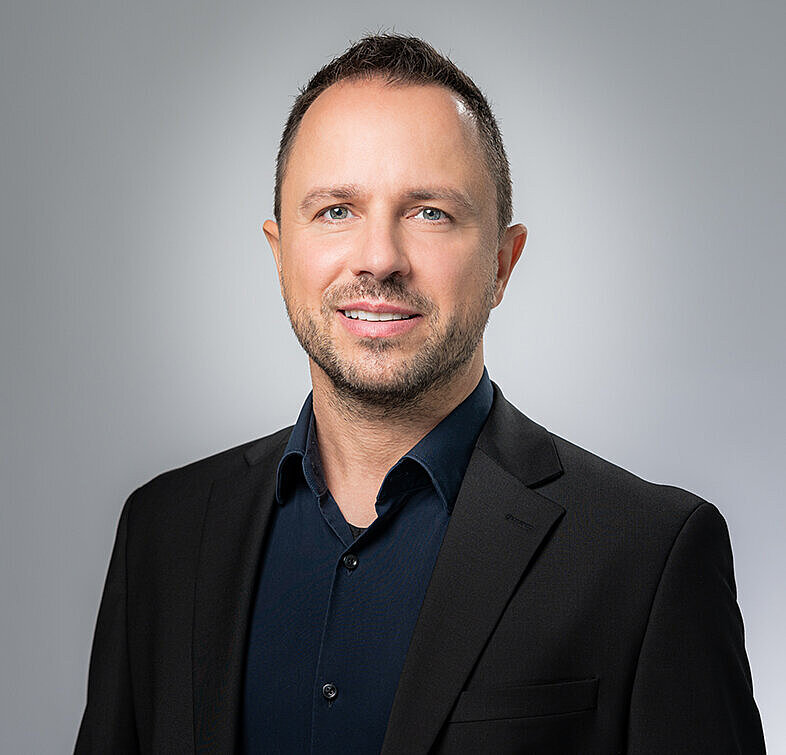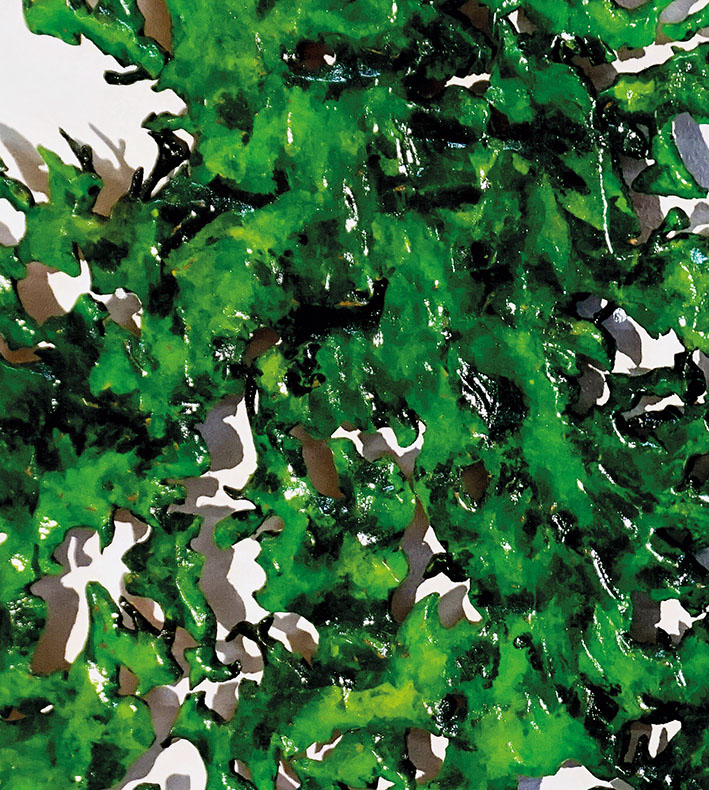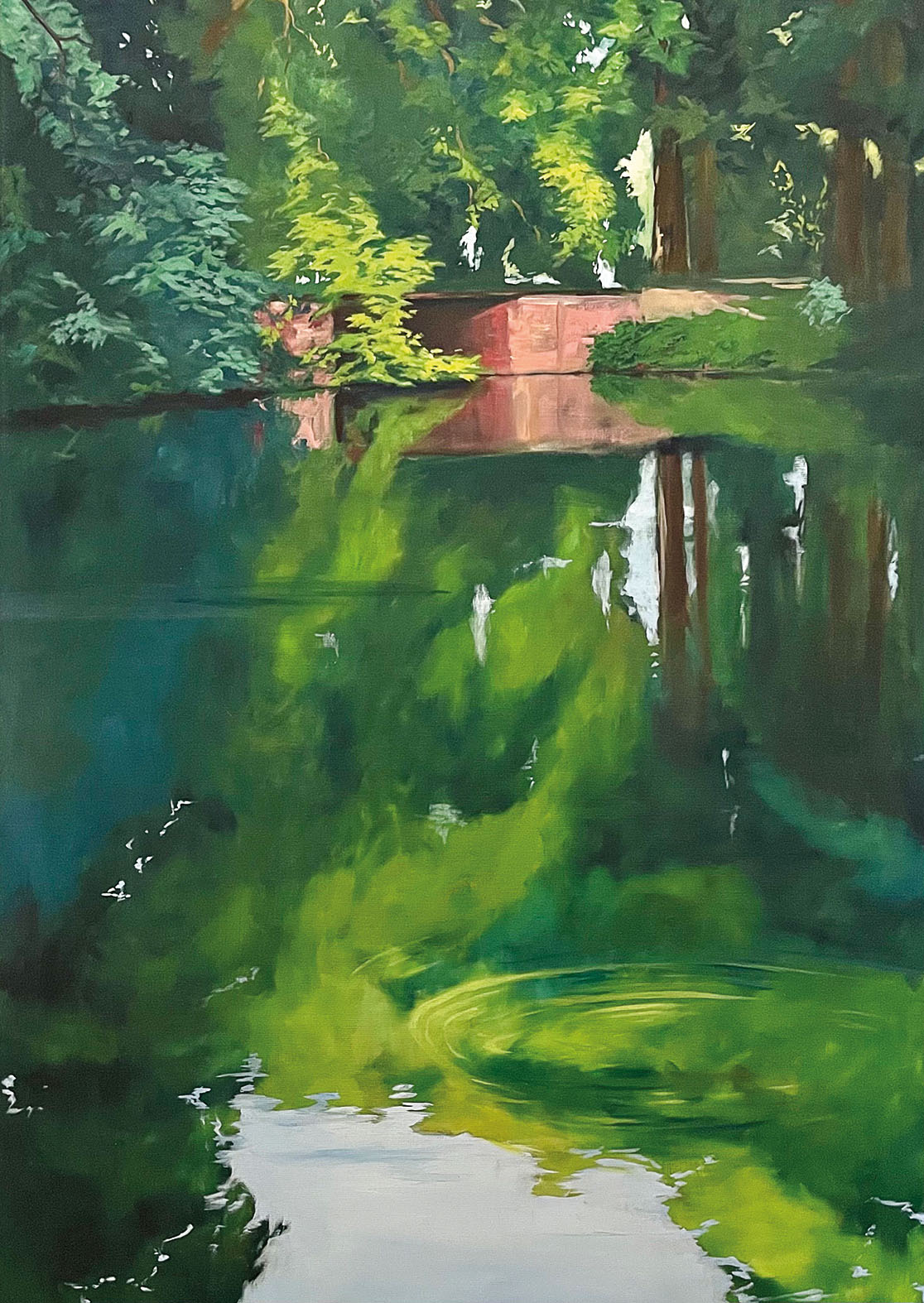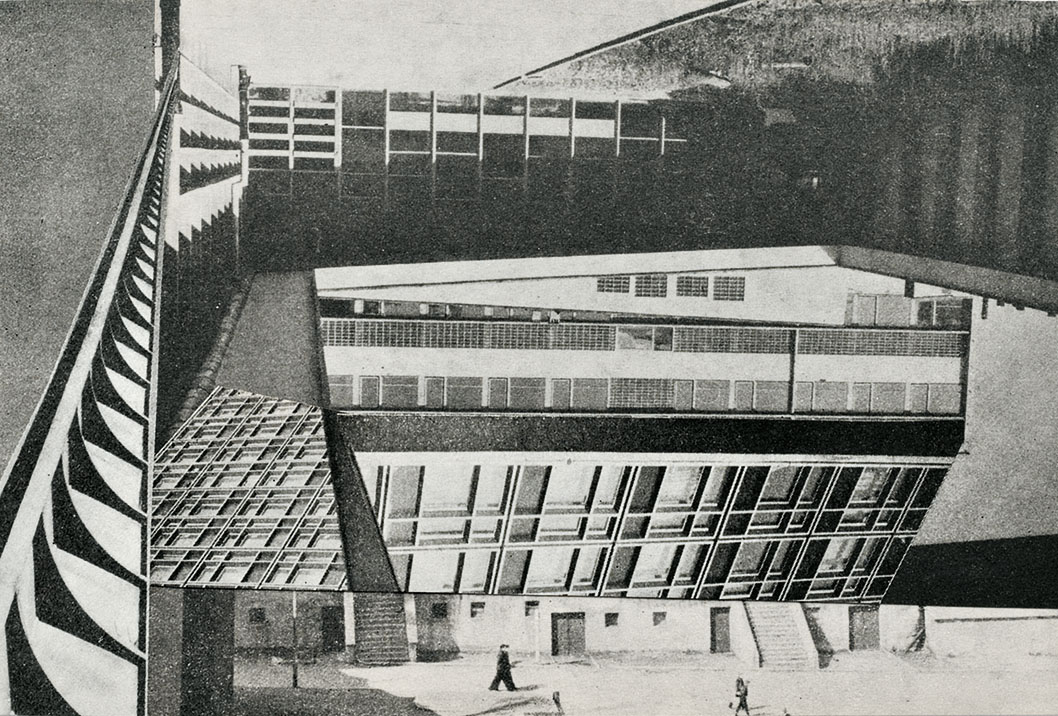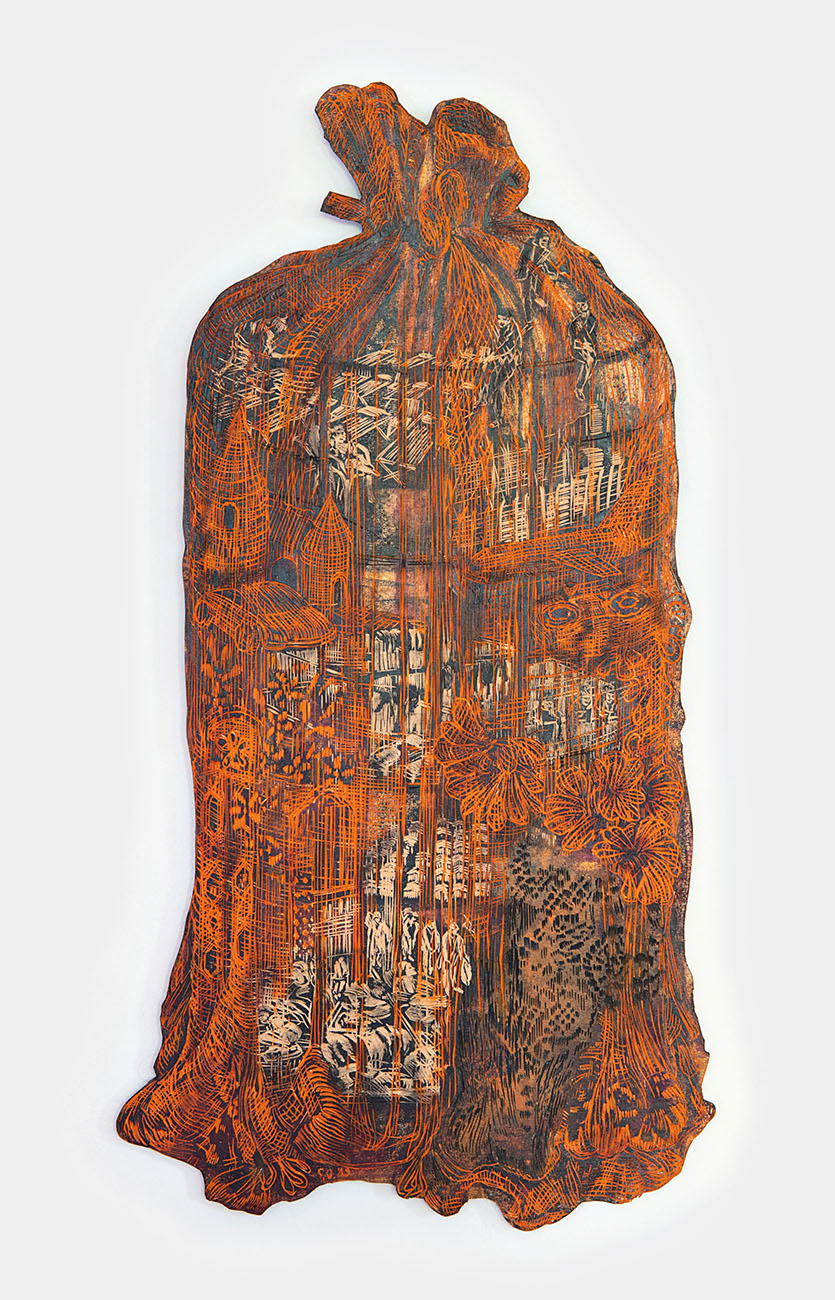New exhibition in the GEHAG Forum: Barbara Eitel, Sabine Ostermann, Christoph Scholz, Ilse Winckler
8th December 2022 – 10th March 2023
Monday to Friday, 9 am to 4 pm
Deutsche Wohnen SE,
Mecklenburgische Straße 57, 14197 Berlin
We invite you to the opening of this exhibition
at 7 pm on Wednesday, 7th December 2022
in the foyer of Deutsche Wohnen SE
Mecklenburgische Straße 57, 14197 Berlin
The speakers will be:
Marko Rosteck, Head of Corporate Communication, Deutsche Wohnen SE
Dr Ralf Hartmann, Head of the Cultural Office in Spandau
In keeping with these difficult times, this exhibition explores different ideas about living spaces. At the same time, these spaces are also thinking spaces in which we can address our current situation in life and our desires. The works exhibited display impressive and contrasting techniques. The first two artists named above, Barbara Eitel and Sabine Ostermann, who are not unfamiliar to visitors of the GEHAG Forum, are being shown in combination with two artists who are new to this forum, Christoph Scholz and Ilse Winkler. This means that visitors and company employees can experience the artistic development of familiar artists whilst, at the same time, being able to discover new artistic standpoints within an overall context. A particular merit of this series of exhibitions, which has more than 30 years of tradition, is that attention is drawn to the work of female artists.
Barbara Eitel has been exhibited twice in the GEHAG Forum. Whilst she displayed works from her series of paper cut drawings in 2015, the artist is also known for her large-scale floor drawings. What is common to all her artistic work is that it always addresses the topic of “space”. The new works from the series “Meshes and Interweaving”, with reliefs fashioned out of sawn strips of fibreboard that are painted and varnished, show an approach to this topic from a new perspective. In an unconventional way, she allows her works to explore and to organically occupy the space they are in like the tendrils of wild-growing ivy. The works are sensually fixed moments in a time that is dynamic and in constant flow.
Sabine Ostermann, whose major work “Homecomer” from 2013 was exhibited in the GEHAG Forum three years after its creation and then transferred to the permanent collection of Deutsche Wohnen, surprises the visitor with pictorial creations that look like stage sets. Baskets, mesh bags and ropes are allegories for social relations within the structures of our society. Her carved linoleum reliefs – the artist’s own technique in which the printing plate that she creates itself becomes the work of art – show a fairy-tale, magical world that draws us in spellbound. When we look more closely, however, we discover the human tragedy that surrounds us.
Christoph Scholz deals with classical themes in painting like landscapes, portraits and still lifes. In so doing, he unfailingly uses the techniques of old masters to explore artistically the realities of his life. A large-scale, landscape bathed in sunshine can be read as a “resonance chamber of the soul, a place of longing or a reflection of one’s inner mood”. Particularly water surfaces and pictures of stormy skies enable him to start with a figurative representation and then to move into the abstract.
Ilse Winckler: In her small-scale collages made up entirely of images taken from architectural magazines, the artist portrays black and white cityscapes which reference building designs that were once seen as visionary. Her condensed architectural forms combine structural elements taken from real motifs and cause the buildings that have been captured photographically to tip into the irrational. She is asking how suited to human beings our urban environment is. By contrast, her large-scale “thinking space” pictures, which are composed of cutting patterns, come across as compressed maps and, thanks to the collage technique preferred by the artist, indicate the possibility of perceiving structures in reality differently.
Barbara Eitel (*1962 in Darmstadt); studied sculpture, drawing and sociology at the University of Art and Design, Offenbach am Main from 1984 to 1992; has worked since 1992 as a freelance artist; several awards – most recently in 2022 from the German Arts Foundation [Stiftung Kunstfonds]; exhibits Germany-wide; has lived and worked in Berlin since 1996. https://barbaraeitel.de
Sabine Ostermann (*1968 in Backnang); studied art and history at the Johannes Gutenberg University Mainz from 1989 to 1996; subsequently, further studies there in graphic art under P. Lörincz; teaching contract in drawing at the Academy of the Arts, Mainz in 2003; period of work in Toulouse from 2006 to 2008; several renowned art awards, most recently in 2019 from the Municipal Gallery of Bietigheim-Bissingen; numerous exhibitions in Germany, France and Serbia; lives and works in Falkensee near Berlin. http://sabine-ostermann.de
Christoph Scholz (*1961 in Müllheim/Baden); following his studies of German, philosophy and history at the University of Freiburg in Breisgau, he turned to journalism and painting. A period of several years spent in Rome had a significant impact on his development as an artist. In addition to individual and joint exhibitions, he has regularly taken part in the Art Biennial “LAND(SCHAFFT)KUNST” in Neuwerder since 2006. Since 2001, he has lived and worked in Berlin and Neuwerder (Havelland). https://www.scholz-kunst.de
Ilse Winckler (*1948 in Broichweiden/Rhineland); studied German and art history at the Friedrich Wilhelm University Bonn from 1974 to 1978, and studied art and literature at the Technical University Berlin from 1979 to 1982; has worked continuously as an artist since 1990; her artist’s book “The Marini Collages” was published in 2021. Numerous individual and group exhibitions in Germany and Italy; lives and works in Berlin and the state of Brandenburg. https://www.ilse-winckler.de
GEHAG Forum
Support for art and artists has a long tradition at Deutsche Wohnen. The roots of this support go back to the 1920s. At that time, Bruno Taut was the in-house architect at GEHAG. As a successful architect, he designed residential apartment houses, but had come originally from painting and was a member of the artists’ association “Gläserne Kette” (Crystal Chain). In honour of Bruno Taut, the first exhibition of the GEHAG Forum, which was founded in 1988, took as its subject a house in Dahlewitz which Taut had designed and created the colour scheme for. Since then, more than 300 artists have – at the invitation of Karl-Hans Schumacher - presented their work in the administration building here on Mecklenburgische Straße. The GEHAG Forum, with its variety of subjects and its integration of work that is far removed from the mainstream, has become a recognized location in the arts scene of Germany’s capital city.
Deutsche Wohnen
Deutsche Wohnen is one of the leading publicly listed property companies in Europe and is part of the Vonovia Group. The business focus of the company is on managing its own portfolio of residential properties in dynamic metropolitan regions and conurbations in Germany. Deutsche Wohnen sees itself as having both a social responsibility and a duty to maintain and newly develop good-quality and affordable housing in vibrant residential neighbourhoods. As at 30 September 2022, the portfolio comprised a total of around 142,600 units, of which 140,000 were residential and around 2,600 commercial.
Your contact person
